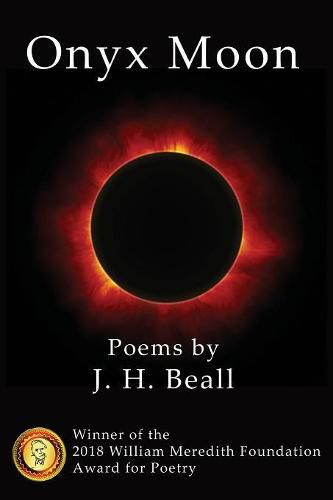Readings Newsletter
Become a Readings Member to make your shopping experience even easier.
Sign in or sign up for free!
You’re not far away from qualifying for FREE standard shipping within Australia
You’ve qualified for FREE standard shipping within Australia
The cart is loading…






This title is printed to order. This book may have been self-published. If so, we cannot guarantee the quality of the content. In the main most books will have gone through the editing process however some may not. We therefore suggest that you be aware of this before ordering this book. If in doubt check either the author or publisher’s details as we are unable to accept any returns unless they are faulty. Please contact us if you have any questions.
James Beall’s work is at first an enigma. What to make of his challenging vision, his unique voice, the round-about syntax, his penchant for unfamiliar diction, his seemingly schizophrenic take on the world. For here is a poet blessed with double vision, a man who sees the world with both brain and heart, who is fully at home in his bicameral mind, scientist and mystic at once.. The literary landscape is rife with physician poets, of course. Poetry has long been linked to medicine; in mythology, the Greek god Apollo was responsible for, among other things, both healing and poetry. Poets like John Keats, Oliver Wendell Holmes Sr. and William Carlos Williams were all trained as doctors. One thinks of the late poet, Dannie Abse who wore both white coat and purple coat. But fewer poets who are also physicists come to mind unless one considers Einstein whose theory or relativity reputedly came to him in a dream, or the kinship between theology and quantum physics found in the work of John Polkinghorne who is both a theoretical physicist and Anglican priest… Often in Beall’s poetry, a poem traces the poet observing his own thought process like a poem by the late John Ashbury. But in Beall’s case, the poem is more accessible, more, frankly, beautiful. The poetry constantly goes beyond the surface with a kind of x-ray vision. (from the Introduction by Richard Harteis).
$9.00 standard shipping within Australia
FREE standard shipping within Australia for orders over $100.00
Express & International shipping calculated at checkout
This title is printed to order. This book may have been self-published. If so, we cannot guarantee the quality of the content. In the main most books will have gone through the editing process however some may not. We therefore suggest that you be aware of this before ordering this book. If in doubt check either the author or publisher’s details as we are unable to accept any returns unless they are faulty. Please contact us if you have any questions.
James Beall’s work is at first an enigma. What to make of his challenging vision, his unique voice, the round-about syntax, his penchant for unfamiliar diction, his seemingly schizophrenic take on the world. For here is a poet blessed with double vision, a man who sees the world with both brain and heart, who is fully at home in his bicameral mind, scientist and mystic at once.. The literary landscape is rife with physician poets, of course. Poetry has long been linked to medicine; in mythology, the Greek god Apollo was responsible for, among other things, both healing and poetry. Poets like John Keats, Oliver Wendell Holmes Sr. and William Carlos Williams were all trained as doctors. One thinks of the late poet, Dannie Abse who wore both white coat and purple coat. But fewer poets who are also physicists come to mind unless one considers Einstein whose theory or relativity reputedly came to him in a dream, or the kinship between theology and quantum physics found in the work of John Polkinghorne who is both a theoretical physicist and Anglican priest… Often in Beall’s poetry, a poem traces the poet observing his own thought process like a poem by the late John Ashbury. But in Beall’s case, the poem is more accessible, more, frankly, beautiful. The poetry constantly goes beyond the surface with a kind of x-ray vision. (from the Introduction by Richard Harteis).